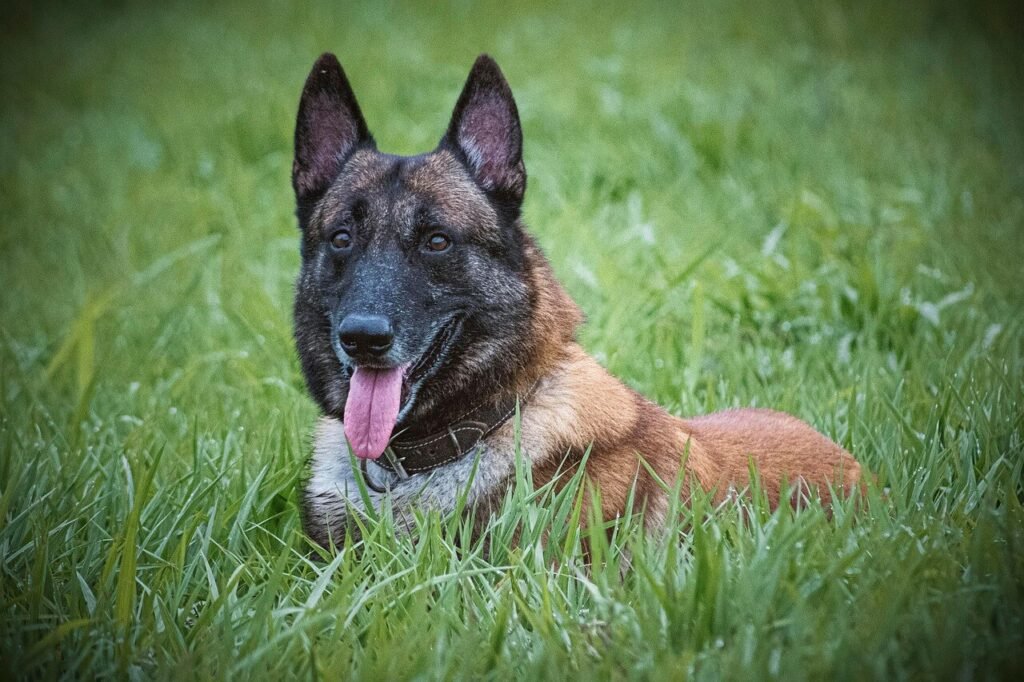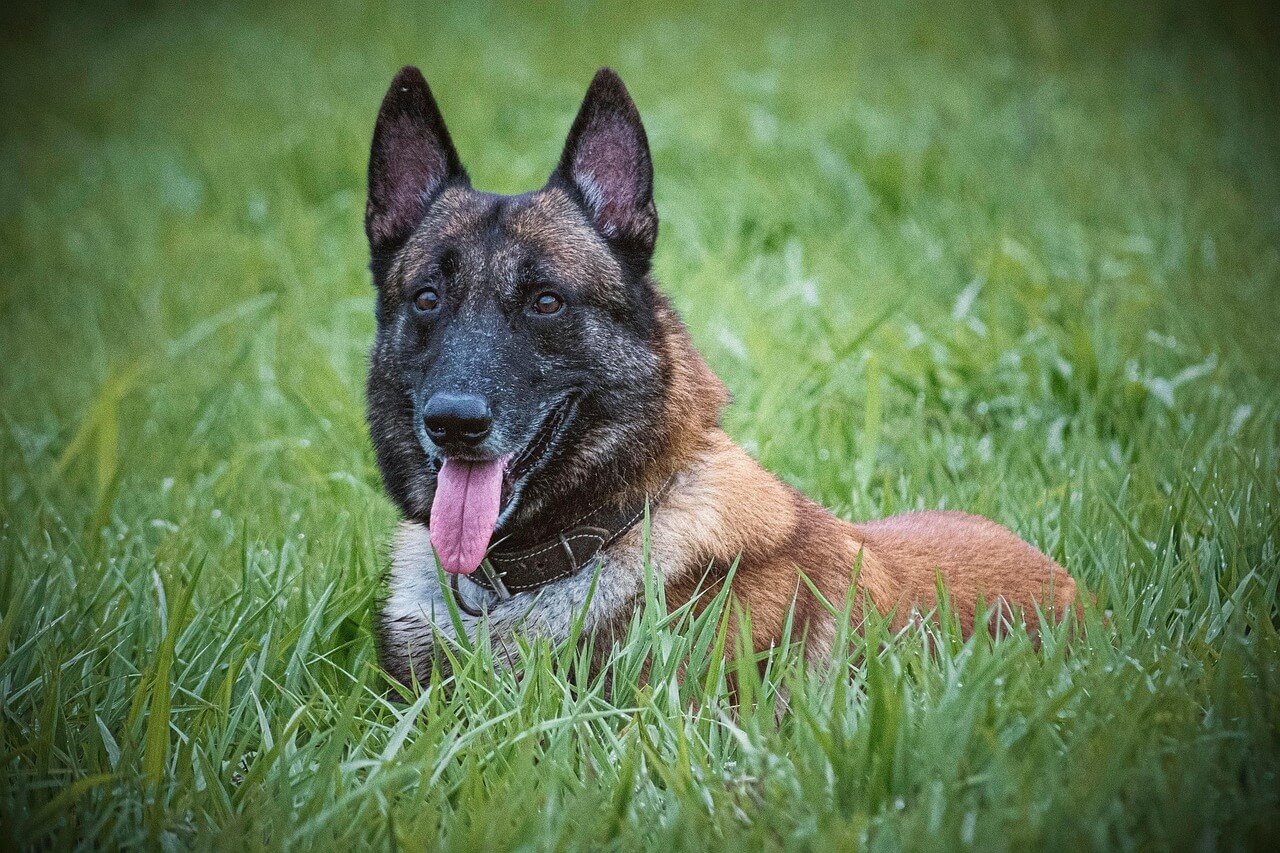Why Do Belgian Malinois Bite So Much?
Belgian Malinois are renowned for their intelligence, athleticism, and unwavering loyalty, making them a favorite among working dogs and active families. However, one common question that arises is why this breed seems to bite so much. Whether it’s playful nibbling, mouthing during training, or intense gripping as part of their work ethic, biting is deeply ingrained in the Belgian Malinois’ behavior. Understanding the reasons behind this natural tendency can help owners channel their dog’s energy positively and build a stronger bond. In this blog post, we’ll explore the instincts, triggers, and solutions related to biting in Belgian Malinois, ensuring both you and your furry companion thrive together.
The Instinctual Reasons Behind Biting in Belgian Malinois
Biting is a natural behavior for Belgian Malinois, rooted in their genetic makeup and historical roles as working dogs. These instincts serve specific purposes and are essential to understanding their behavior.
Herding Heritage:
Originally bred to herd livestock, Belgian Malinois use their mouths to guide and control animals gently. This instinct often translates into mouthing or nipping behaviors with humans.Prey Drive:
Their strong prey drive compels them to chase, grip, and sometimes bite moving objects, which they perceive as “prey.”Protection Instincts:
As guard dogs, Belgian Malinois are naturally inclined to defend their territory and family, using their teeth as a tool for protection if necessary.Energy Release:
High-energy breeds like the Malinois often resort to biting as a way to release pent-up energy when not adequately exercised or mentally stimulated.Teething Phase:
Puppies, including Belgian Malinois, go through a teething phase where chewing and biting help soothe sore gums.
Understanding these instinctual drivers helps explain why biting is so prevalent in Belgian Malinois and highlights the importance of proper training and redirection.
Signs That Your Belgian Malinois’ Biting May Be Problematic
While some biting is normal, certain behaviors indicate that your Belgian Malinois may need additional guidance or intervention. Recognizing these signs early can prevent issues from escalating.
Aggressive Growling While Biting:
If your dog growls or shows signs of aggression while biting, it could signal dominance or fear-based behavior that needs addressing.Frequent Hard Bites:
Consistently biting too hard, even during play, suggests a lack of bite inhibition and requires corrective training.Targeting Specific People or Animals:
Focusing aggressive biting on particular individuals or pets may indicate territorial or resource-guarding tendencies.Biting Out of Fear or Anxiety:
Some Malinois bite defensively when they feel threatened or overwhelmed by unfamiliar situations.Ignoring Commands During Play:
If your dog continues to bite despite being told to stop, it may reflect a lack of obedience training or impulse control.
By identifying these warning signs, you can take proactive steps to address problematic biting before it becomes a serious issue.
Check this guide 👉Are Belgian Malinois Protective? Best 7 Expert Tips!
Check this guide 👉Are Belgian Malinois Hypoallergenic? Best 7 Expert Tips!
Check this guide 👉Do Belgian Malinois Shed a Lot? Best 7 Health Tips!

Causes of Excessive Biting in Belgian Malinois | Solutions to Manage Biting Behavior |
|---|---|
High energy levels | Provide ample exercise and mental stimulation daily |
Lack of socialization | Introduce them to various people, animals, and environments early on |
Teething discomfort | Offer durable chew toys designed for teething puppies |
Strong prey drive | Redirect their focus with fetch games or tug-of-war |
Insufficient training | Enroll in obedience classes to reinforce commands and bite inhibition |
How to Train Your Belgian Malinois to Control Biting
Training is key to managing and redirecting your Belgian Malinois’ biting tendencies. With patience and consistency, you can teach them appropriate ways to interact without resorting to excessive biting.
Teach Bite Inhibition:
Start by teaching your puppy soft bites during play, rewarding gentle interactions and stopping playtime immediately if they bite too hard.Use Positive Reinforcement:
Reward calm behavior and non-biting actions with treats, praise, or toys to encourage desirable habits.Redirect Energy Appropriately:
Provide alternative outlets for their energy, such as interactive toys, puzzle feeders, or structured activities like agility training.Set Clear Boundaries:
Establish rules about what behaviors are acceptable and consistently enforce them to avoid confusion.Practice Obedience Commands:
Reinforce basic commands like “leave it,” “drop it,” and “no bite” to give you greater control over their actions.
With consistent training, your Belgian Malinois will learn to express their natural instincts in safer and more constructive ways.
Activities to Channel Your Belgian Malinois’ Biting Instincts Positively
Instead of suppressing their biting instincts, providing structured activities allows your Belgian Malinois to engage their natural behaviors in productive ways.
Tug-of-War Games:
Playing tug-of-war satisfies their urge to grip and pull while strengthening your bond through controlled interaction.Fetch with Durable Toys:
Throwing indestructible balls or frisbees gives them an outlet for chasing and retrieving without damaging household items.Agility Training:
Courses involving obstacles challenge their physical and mental abilities, keeping them engaged and focused.Schutzhund or IPO Sports:
These specialized disciplines allow them to practice controlled biting under professional supervision, often simulating real-world tasks.Chew Toys and Bones:
Providing safe, long-lasting chew options prevents destructive chewing on furniture or personal belongings.
Engaging in these activities ensures your Belgian Malinois stays physically fit, mentally sharp, and less likely to exhibit unwanted biting behaviors.
Common Misconceptions About Belgian Malinois Biting
Several myths surround Belgian Malinois and their biting habits, leading to misunderstandings about the breed. Clarifying these misconceptions helps set realistic expectations for owners.
They Are Naturally Aggressive Biters:
While they have a strong bite force, aggression isn’t inherent—it results from poor training or mishandling.All Malinois Will Bite Without Warning:
Properly trained and socialized Malinois rarely bite unless provoked or feeling threatened.Biting Can’t Be Controlled:
With consistent training and redirection, even the strongest biting tendencies can be managed effectively.Only Working Dogs Bite Frequently:
Pet Malinois also exhibit biting behaviors due to their high energy levels and instincts, regardless of their role.Punishment Stops Biting:
Harsh punishment often worsens biting issues; positive reinforcement yields far better results.
Addressing these misconceptions fosters a deeper appreciation for the breed’s true nature.
Health Issues That May Influence Biting Behavior
Sometimes, underlying health problems can contribute to excessive biting in Belgian Malinois. Identifying and treating these conditions ensures their comfort and reduces unwanted behaviors.
Dental Pain:
Toothaches or gum infections can cause irritability and increased biting as a way to relieve discomfort.Skin Allergies:
Itching or irritation from allergies may prompt excessive chewing or biting of affected areas.Joint Problems:
Conditions like hip dysplasia can make movement painful, increasing frustration and potentially triggering biting.Ear Infections:
Ear discomfort may lead to head shaking and biting near the ears as they attempt to alleviate pain.Anxiety Disorders:
Separation anxiety or generalized stress can manifest as compulsive biting or destructive chewing.
Consulting a veterinarian can rule out medical causes and ensure your Malinois receives proper care.
Tips for Socializing Your Belgian Malinois to Reduce Biting
Socialization plays a crucial role in shaping your Belgian Malinois’ behavior and reducing inappropriate biting. Here are some tips to help them interact confidently and respectfully with others.
Expose Them Early:
Introduce your puppy to different environments, sounds, and people before 16 weeks of age to build confidence and adaptability.Arrange Playdates:
Organize supervised play sessions with other friendly, vaccinated dogs to teach appropriate play and bite inhibition.Reward Calm Interactions:
Praise and reward your dog for calm, non-biting behavior around strangers or new animals.Avoid Overstimulation:
Limit exposure to overly stimulating situations that might trigger excitement-based biting until they’re more mature.Teach Focus Commands:
Use commands like “look at me” or “watch” to redirect their attention away from potential biting triggers.
Proper socialization lays the foundation for a well-rounded Belgian Malinois who knows how to interact appropriately.
Frequently Asked Questions About Belgian Malinois Biting
Is biting normal for Belgian Malinois?
Yes, biting is a natural behavior stemming from their herding and guarding instincts, but it should be managed through training.
At what age does biting typically decrease?
Biting usually decreases after the teething phase (around 6-8 months) and with proper training and socialization.
Can adult Belgian Malinois learn bite inhibition?
Yes, though it takes time and consistency, adult dogs can still develop better bite control with dedicated training.
Are Belgian Malinois aggressive biters?
Not inherently, but improper handling, lack of training, or fear can lead to aggressive biting tendencies.
What should I do if my Malinois bites too hard?
Immediately stop interacting, calmly say “ouch,” and redirect their attention to a toy or activity to teach gentler behavior.
Building a Harmonious Relationship with Your Belgian Malinois
While biting is a natural part of a Belgian Malinois’ behavior, it doesn’t have to become a problem with the right approach. By understanding their instincts, providing adequate exercise and mental stimulation, and investing in consistent training, you can transform their biting tendencies into positive expressions of their unique personality. Remember, your Belgian Malinois looks to you for leadership and guidance—by setting clear boundaries and offering enriching experiences, you’ll foster a loving, respectful relationship that benefits both of you. With patience and dedication, your Malinois will grow into a well-adjusted, confident companion who channels their incredible energy into meaningful pursuits.
Understanding Cryptosporidium in Cats: Best 7 Expert Tips! – Spot symptoms, treat safely, and stop parasite spread in your home.
Understanding Cryptosporidium in Dogs: Best 7 Expert Tips! – Learn symptoms, treatment & prevention for this stubborn gut parasite.
Understanding Syringomyelia in Cats: Best 7 Expert Tips! – Recognize signs, manage pain, and support your cat’s neurological health with vet-backed guidance.
Understanding Syringomyelia in Dogs: Best 7 Expert Tips! – Expert insights on symptoms, MRI diagnosis, pain management & quality of life.





